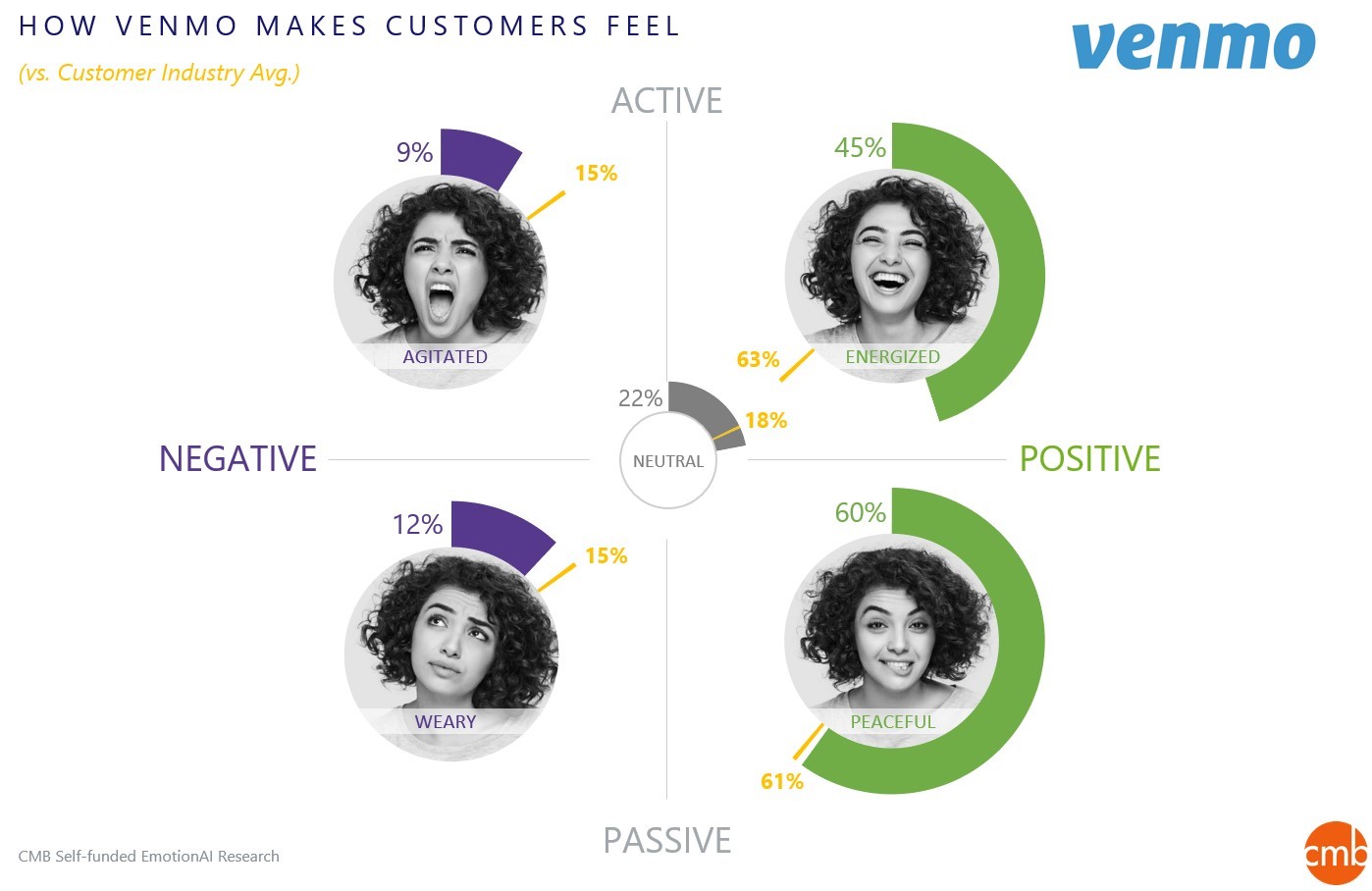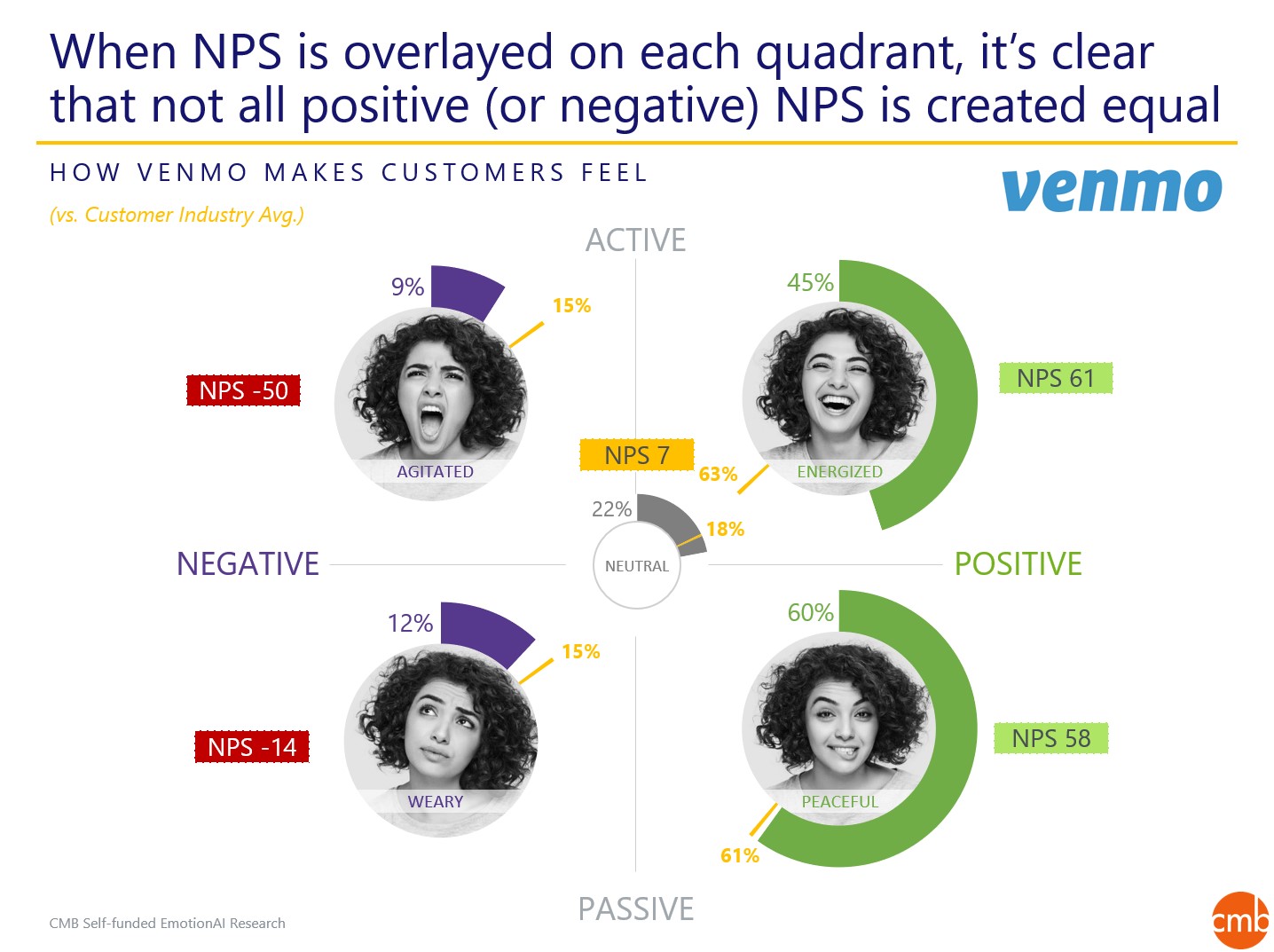About a 2 min. read
When Net Promoter Score® (NPS) hit the brand measurement scene two decades ago, it was quickly embraced by companies across industries as THE measure of brand advocacy. Researchers learned how to calculate scores and analyze shifts as well. Companies began to track their ratings over time and compare their brand to their competitors. However, NPS never told the full story, and everyone tried to find the deeper answers of why shifts happen and what they mean. Still today, the question remains: are we getting the full value of NPS, and the guidance to develop strategies that improve loyalty and advocacy for the brand?
In short, no. And there is even more to learn under the hood because not all negative or all positive NPS are created equal. For example, Venmo has an NPS of 27 broadly among its users. And while that might seem like a decent enough score compared to its competition, it only tells part of the story. To get deeper into understanding NPS, CMB looks through the lens of emotions.
Self-funded research conducted by CMB leverages proprietary AI tools to map emotions expressed in customers’ own words into their appropriate quadrants on our Brand Emotions Map. These quadrants are defined by a deep understanding of valence (how positively or negatively does the brand experience make you feel) and activation (how strongly do you feel those emotions—i.e. active or passive). Doing so for Venmo revealed relatively small, but important, proportions of customers who feel negatively about their experiences with the brand.

When we then recalculated NPS for each of the quadrants, a more nuanced story emerged.

When considering how to improve NPS among customers, we would likely recommend different strategies for the quadrants. Venmo customers who have ACTIVE emotions are more likely to talk about their brand experience—either positively or negatively. So, for those with NEGATIVE ACTIVE emotions (hate, anger, frustration), an immediate plan to understand and address their specific issues is required to minimize the damage to the brand that a group such as this might cause. If left untouched, not only are they motivated to leave the brand, but will likely talk about you poorly on their way out.
Another interesting group are the neutral customers. While they don’t have a negative NPS, Venmo has work to do to create a positive emotional connection and keep them as customers. From our research on emotions within financial services (across card, banking, investing, and payments) we know that customers who fall into the lower right quadrant (low-activation, positive emotions) are most loyal to the brand and most satisfied. In this scenario, developing a strategy to gently push neutral respondents into a PASSIVE POSITIVE quadrant is essential.
For customers on the positive side, Venmo might capitalize on the HIGH ACTIVATION quadrant, enacting plans to encourage and reward referrals. These customers are most likely to become brand advocates as long as the brand delivers as customers expect.
As a custom market research firm, CMB partners with clients to uncover the specific motivational insights in survey responses. Combining traditional measures like NPS with Emotion Mapping creates a laser focus on the scope of potential issues, the emotions associated, and a prioritization of action to move the brand forward. Ready to get your brand health journey started? Let CMB help you make an impact.